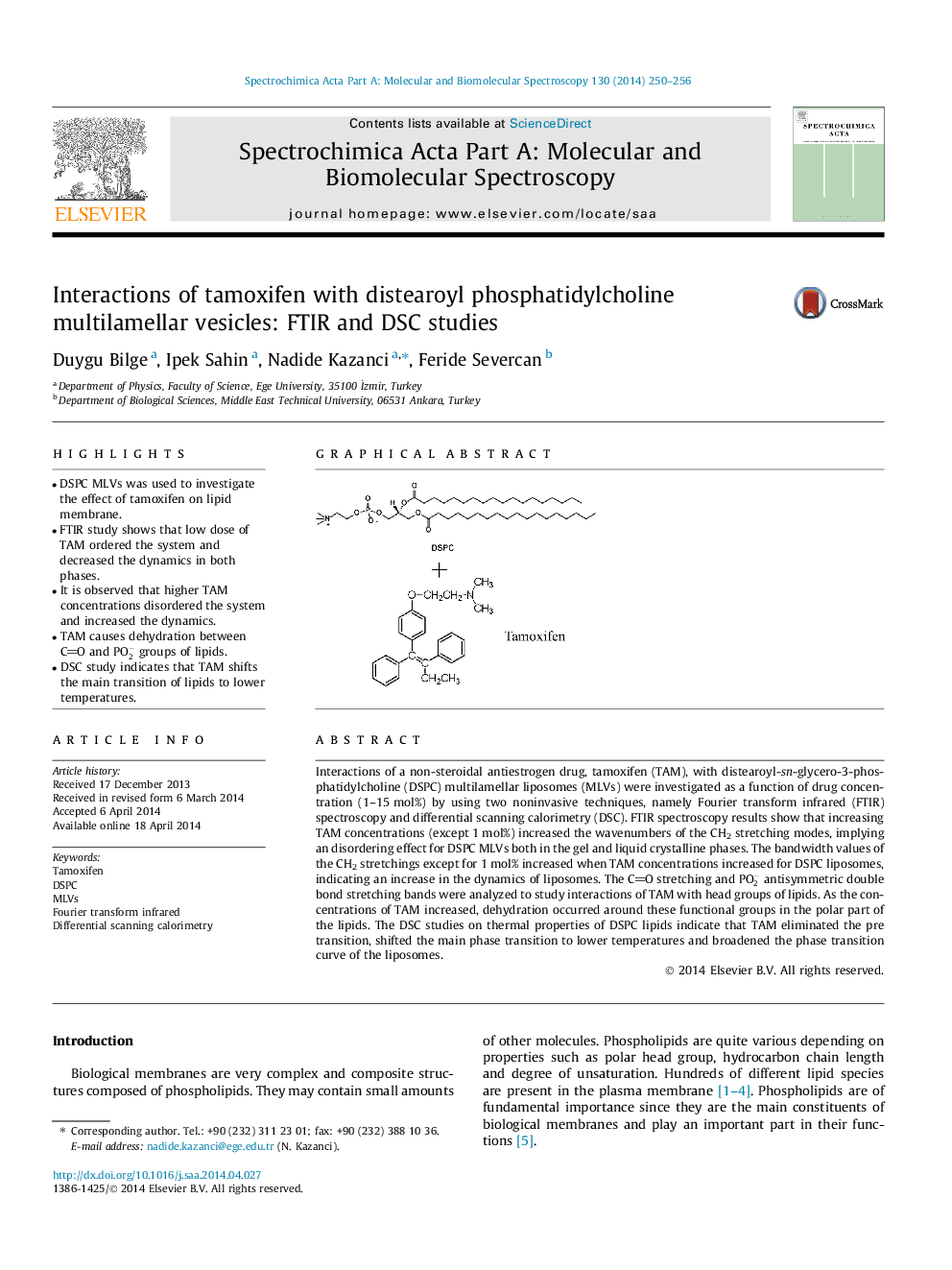| Article ID | Journal | Published Year | Pages | File Type |
|---|---|---|---|---|
| 1230349 | Spectrochimica Acta Part A: Molecular and Biomolecular Spectroscopy | 2014 | 7 Pages |
•DSPC MLVs was used to investigate the effect of tamoxifen on lipid membrane.•FTIR study shows that low dose of TAM ordered the system and decreased the dynamics in both phases.•It is observed that higher TAM concentrations disordered the system and increased the dynamics.•TAM causes dehydration between CO and PO2- groups of lipids.•DSC study indicates that TAM shifts the main transition of lipids to lower temperatures.
Interactions of a non-steroidal antiestrogen drug, tamoxifen (TAM), with distearoyl-sn-glycero-3-phosphatidylcholine (DSPC) multilamellar liposomes (MLVs) were investigated as a function of drug concentration (1–15 mol%) by using two noninvasive techniques, namely Fourier transform infrared (FTIR) spectroscopy and differential scanning calorimetry (DSC). FTIR spectroscopy results show that increasing TAM concentrations (except 1 mol%) increased the wavenumbers of the CH2 stretching modes, implying an disordering effect for DSPC MLVs both in the gel and liquid crystalline phases. The bandwidth values of the CH2 stretchings except for 1 mol% increased when TAM concentrations increased for DSPC liposomes, indicating an increase in the dynamics of liposomes. The CO stretching and PO2- antisymmetric double bond stretching bands were analyzed to study interactions of TAM with head groups of lipids. As the concentrations of TAM increased, dehydration occurred around these functional groups in the polar part of the lipids. The DSC studies on thermal properties of DSPC lipids indicate that TAM eliminated the pre transition, shifted the main phase transition to lower temperatures and broadened the phase transition curve of the liposomes.
Graphical abstractFigure optionsDownload full-size imageDownload as PowerPoint slide
